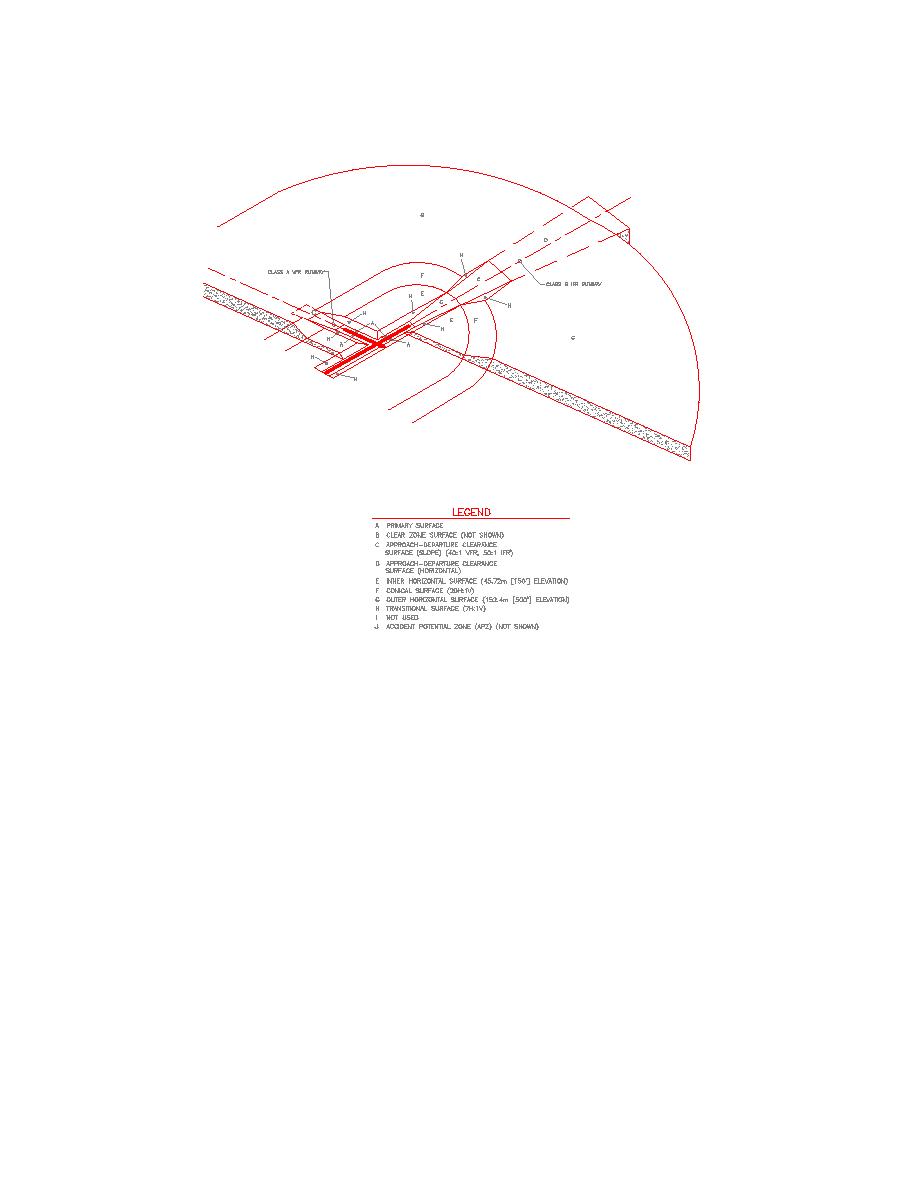
Chapter 3
Figure 3.19. VFR and IFR Crosswind Runways Isometric Airspace Imaginary Surfaces.
3.9. Shoulders. Unprotected areas adjacent to runways and overruns are susceptible to erosion caused
by jet blast. Shoulders reduce the probability of serious damage to an aircraft to a minimum in the event
the aircraft runs off the runway pavement. The shoulder width, shown in Item 3 of Table 3.2, includes
both paved and unpaved shoulders. Paved shoulders are required adjacent to all runways. The
minimum paved shoulder width, shown in Table 3.2, allows the runway edge lights to be placed within
the paved portion of the shoulder and to reduce foreign object damage (FOD) to aircraft. The unpaved
shoulder should be graded to prevent water from ponding on the adjacent paved area (shoulder and
runway). The drop-off next to the paved area prevents turf (which may build up over the years) from
ponding water. For USAF, manholes, hand holes, and drainage structures constructed within these areas
should be designed to support a 34,000 kg (75,000 lbs) wheel load and the top surface of foundations
should be flush with grade. Maintenance action is required if the drop-off at the edge of the foundation
exceeds 76 mm (three inches).
minimum in the event the aircraft runs off the runway during a take-off or lands short during a landing.
Overruns are required for the landing and take-off area. Table 3.4 shows the dimensional requirements
for overruns. Overrun profiles are shown in Figure 3.3, and an overrun layout is shown in Figures 3.7,
3.10, 3.13, and 3.16.
3-28



 Previous Page
Previous Page
